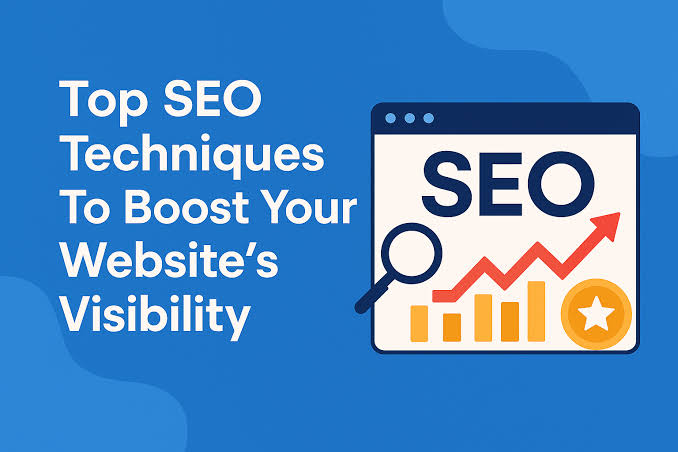Almost every business wants to reach more people, no matter their industry or size. By July 2025, marketing is changing fast because of new customer habits, new technology, and more competition online. To do well, businesses need to use flexible strategies that not only get noticed but also turn interest into real engagement and loyalty.
Marketing in 2025 is no longer about broadcasting a single message to the masses. It is about understanding your audience, meeting them where they are, and providing value through the right mix of content, platforms, and experiences. This article explores up-to-date and actionable strategies that can help any brand effectively expand its reach while building a lasting connection with potential customers.
Know Your Target Audience Inside Out
Before attempting to expand your audience, it is essential to understand your existing one. Without a clear picture of who your customers are, what they value, and how they behave, your efforts to grow will likely miss the mark. As of 2025, access to consumer data is easier than ever, thanks to social media analytics, website behavior tracking, and customer relationship management (CRM) systems powered by AI.
Use these tools to develop detailed buyer personas. These should include demographic information, purchase motivations, preferred platforms, and even behavioral patterns. Once you have this insight, you can more accurately predict where similar audiences exist and tailor your outreach accordingly. Expanding starts with deepening your understanding of the people already engaging with your brand.
Leverage Multi-Platform Content Marketing
Today’s digital audience is scattered across a variety of platforms. Some people prefer Instagram and TikTok for visuals, others rely on YouTube for how-to content, and professionals spend more time on LinkedIn. To reach a broader audience, brands must adopt a multi-platform content strategy that adjusts messaging and format depending on where it’s being published.
Create content that is repurposed for each platform rather than duplicated. A blog post can be turned into an infographic for Instagram, a short video for TikTok, and a discussion topic on LinkedIn. This approach ensures your message resonates in context, increasing the likelihood of engagement and shareability. In 2025, businesses that create platform-native content tend to outperform those that use a one-size-fits-all method.
Optimize for Voice and Visual Search
Search engines have evolved significantly in recent years, and so have the ways users look for information. With the widespread use of voice assistants and AI-powered image recognition tools, businesses must optimize their content for voice and visual search to capture new traffic sources.
Use natural language in your website content and FAQs to match the conversational tone of voice search. For visual search, ensure all images are properly tagged with relevant metadata and high-resolution files. Platforms like Google Lens and Pinterest Lens are now essential tools for discovery, and having optimized visuals can help your brand appear in unexpected but relevant search queries.
Collaborate with Influencers and Micro-Influencers
Influencer marketing has matured by 2025, with brands realizing the long-term value of partnerships over one-off promotions. Collaborating with influencers, especially micro-influencers who have smaller but highly engaged audiences, allows your message to be delivered in a more personal and trusted way.
Identify influencers who align with your brand’s mission and appeal to audiences you wish to reach. Rather than focusing solely on follower counts, prioritize authenticity and engagement rates. Collaborations can take many forms, from co-creating content and running giveaways to featuring influencers in product development or brand campaigns. Influencer partnerships help brands tap into new networks with credibility and speed.
Invest in Paid Advertising with Precision Targeting
While organic reach is valuable, paid advertising remains one of the fastest ways to reach a broader audience—especially when executed with precision. Platforms like Meta, Google, TikTok, and LinkedIn now offer hyper-targeted ad options that allow brands to reach users based on behavior, interests, location, and even life events.
Use A/B testing to determine which headlines, visuals, and calls-to-action perform best. Modern ad platforms now integrate AI tools that optimize your campaigns in real time based on user responses. Retargeting also plays a vital role in keeping your brand visible to users who have interacted with you before but haven’t yet converted. With rising competition and limited organic visibility, smart paid strategies are critical to expansion.
Develop Strategic Partnerships
Partnering with complementary brands or organizations can expand your audience significantly. Whether through co-branded products, joint campaigns, or events, partnerships allow you to access new markets while sharing resources and credibility. In 2025, businesses are increasingly entering ecosystem-style alliances that create long-term mutual benefits.
Look for companies that share your target audience but are not direct competitors. For example, a fitness brand might partner with a healthy food company for a content campaign. Strategic partnerships not only increase reach but also add diversity to your brand narrative, attracting audiences from different angles.
Encourage User-Generated Content
People trust other people more than they trust brands. That’s why user-generated content (UGC)—such as reviews, testimonials, social media mentions, and shared photos—is one of the most effective ways to increase credibility and reach. In 2025, brands are finding creative ways to encourage their customers to become advocates by sharing their experiences online.
Run contests, create branded hashtags, or offer small incentives for customers to post about their purchases. Share this content across your channels to not only build trust with new audiences but also show appreciation for your existing customers. UGC acts as both word-of-mouth and social proof, making it a powerful driver of audience growth.
Use Data Analytics to Guide Decisions
Expanding your audience should never be a shot in the dark. In today’s data-rich environment, you have access to real-time performance metrics that can guide your marketing strategies. Tools like Google Analytics, HubSpot, or platform-specific insights help identify what content is resonating, which audiences are engaging most, and where there are gaps.
Pay attention to metrics such as bounce rate, time on page, and engagement rate to evaluate content effectiveness. If a specific campaign brings in a high volume of new users but low conversion, it’s a sign your message may need refinement. Constant monitoring and iterative improvement are key to maintaining growth momentum.
Final Thoughts
Reaching a wider audience in 2025 requires a holistic, data-driven, and creative approach. It’s about understanding who your customers are, where they spend their time, and how best to engage them in ways that feel meaningful and personalized. No single strategy will work for everyone, but a well-rounded mix of content marketing, paid outreach, strategic partnerships, and data-backed decisions can elevate your brand to new heights.
The brands that thrive are those that stay adaptable, experiment with new tactics, and listen to what their audiences want. By consistently refining your marketing strategies and staying aligned with the evolving digital landscape, you position your business not just to reach a wider audience—but to convert that reach into loyal, long-term relationships.



